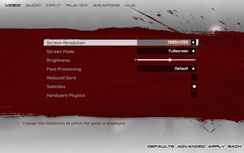HIS Radeon HD 3850 IceQ 3 TurboX 512MB
March 8, 2008 | 08:29

Unreal Tournament 3
Publisher: MidwayUnreal Tournament 3 is the latest addition to the Unreal franchise and it is a clear attempt to replace the previously separate games. Unreal used to be very focused on singleplayer elements, while Unreal Tournament's focus was on the multiplayer side of things.
The game is based on Epic's heavily licensed Unreal Engine 3 technology, which is used by many games that were released last year or are due for release over the next couple of years. The current version of Unreal Tournament 3 only supports DirectX 9.0 but Mark Rein, vice president of Epic Games, said that DirectX 10 support in UT3 is forthcoming.
The engine uses a Deferred Rendering technique, which basically prevents the game from supporting anti-aliasing techniques in a traditional sense because there are multiple surfaces stored in the MRTs. In fact, Epic decided that there wasn't even a need to include application-controlled anisotropic filtering - instead, we had to force anisotropic filtering from the driver control panel.
Because of the variability in this title, being a multiplayer game, we played five three minute bot matches against 23 bots on the vCTF-Sandstorm map, recording the average frame rate over this period. We then removed the highest and lowest results to remove outliers and the average of the remaining three is the frame rate we are displaying here -- this represents around nine minutes of typical gameplay.
Generally, you will not notice the difference in performance between the HIS Radeon HD 3850 512MB and the Nvidia GeForce 9600 GT at either resolution as the performance difference between the two cards is small – at best, the gap is just four percent or a few frames per second.
Normally that’s worth talking about, but when the frame rates are above 50 frames per second at 1280x1024 and approaching that value at 1680x1050, it becomes nothing more than a blind taste test. After playing UT3 on both cards independently of our benchmarking routine, I have to say that you’ll find it hard to notice the difference – both deliver a great experience in this title.

MSI MPG Velox 100R Chassis Review
October 14 2021 | 15:04










Want to comment? Please log in.